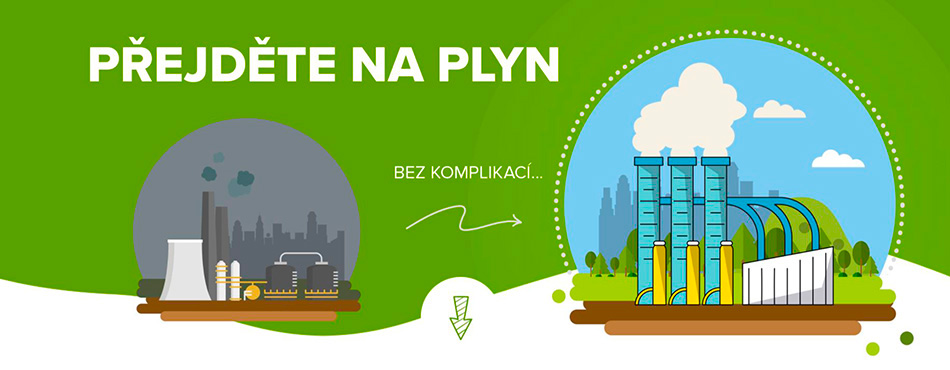3/2023
INFORMATIVE ARTICLES
- Energy Efficiency in the First Place
- Eleven Reasons for Gas Cogeneration
- GasNet Opens a New LNG Station near Prague
- The Biogas Plant in Mladá Boleslav Supplies Biomethane to Distribution and Buses
- The First Biomethane Plant in Prague Connected to the Pražská plynárenská Distribuce Network
- Current Status of BIM Implementation in (not only) the Gas Industry
- Quo Vadis, Czech Hydrogen, and What Limits has Europe in Store for You?
- SPP-distribúcia’s Gas Infrastructure Is Bound to Be an Element in Energy Transition
- New Hydrogen Filling Stations
- The Option of a Sponsored Approach to Technical Rules in the Gas Industry
- František Šubrt, Obituary
- Looking into History
THE CGA‘S ACTIVITIES
- Josef Kotrba Is the New Director General of the Czech Gas Association
- Gas Experts Advise: Now Is the Right Time for Gas Appliance Servicing
- The Summer Gas School 2023
TECHNICAL ARTICLES
Plant Retrofit for Energy Savings at the Tvrdonice UGS Facility
Libor Čapla, Lukáš Kopal, Peter Miňo, František Šubrt, Petr Zamrazil, Pavel Zigáček
Summary: The plant retrofit at the Tvrdonice UGS facility included three interrelated projects: 1 Retrofit of the dehydrating equipment, 2 Retrofit of the triethylene glycol (triglycol, TEG) regeneration unit, and 3 Replacement of steam-based preheating with water-based preheating. The purpose of the plant retrofit project was to replace extensive parts of plant and equipment in the central area of the Tvrdonice UGS facility, which is important for gas withdrawal. The original equipment had almost reached the end of its service life, which implied the risk of an increasing frequency of faults and defects if it continued to be operated; ultimately, this could result in constrained operation. The project has been completed, and a high reliability of the UGS facility’s operation is now ensured. The modernised plant also makes it possible to increase the gas withdrawal capacity while significantly reducing the energy intensity of the operation in the withdrawal mode thanks to implementing two-stage regulation of withdrawn gas pressure instead of one-stage regulation and replacing steam boilers with more efficient hot water boilers. The project also included the installation of the very first cogeneration unit at RWE Gas Storage CZ; the unit’s key parameters are 1.1 MWt and 999 kWe. The heat is consumed for gas preheating while surplus electricity, net of own use, is supplied to the public grid.
Key words: Underground gas storage facility (UGS), cogeneration, energy savings
Heat Pump Use: Pitfalls and Benefits
Jan Toufar
Summary: People who want to reduce their heating bill or the greenhouse gas emissions in this country now very often look to heat pumps for help. The opportunity to obtain heat where it occurs spontaneously and ‘to no purpose’ at present is very attractive. However, there are not many technologies that have, when applied, very different conditions, results, and consequences of use such as heat pumps have. The contribution does not aim at taking stock of the limits or volumes of the potential spreading of heat pumps. It highlights the seasonal to hourly differences in the operation of various heat pump installations and the consequences for the operation of the gas system and the electricity grid, and for emission savings.
Key words: Heat pump, seasonal nature, gas and electricity consumption, emission savings
Results of a Laboratory Study and Field Validation of the Resistance of Modern Three-layer PE Coatings to Loss of Adhesion Due to Active Corrosion Protection (Cathodic Disbondment)
Daniel Hlinomaz
Summary: In the case of very negative pipe-to-soil potentials (Epol converging to -1.25 V), active corrosion protection has adverse impacts on coating systems. In the metal-electrolyte contact areas these negative values help to produce alkalinity and also, potentially, hydrogen, which degrades the coating system’s adhesion to the structure being protected. Adhesion between the coating system and steel is fundamental for the scale of this mechanism. Utilising the excellent properties of resins, the current factory-produced 3LPE coatings differ from their two-layer predecessors, Bralen® coatings, significantly in respect of this adhesion bridge. PPD, a.s. therefore commissioned from ÚVP Protikorozní ochrana, s.r.o. a study intended to find the extent of cathodic under-film corrosion for modern 3LPE coatings and compare it with the most widespread bituminous coatings. The study also included a correlation between the laboratory results and the excavations of these types of defects on the operated gas installations. The contribution describes the procedures used in and the results of this study.
Key words: PE coating, loss of adhesion, cathodic under-film corrosion, laboratory tests, active corrosion protection (ACP), Cathodic Disbonding





